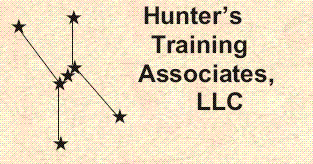
Cross Program Communication in z/OS - Topical Outline
Day One
Introduction to the Course
Interesting Applications
Coding Notes For Examples in the Class
Computer Exercise: Setting Up for the Labs
Defining Elementary Data Items
General Concerns
Data Types - zSeries Hardware
Data Types
Character String
Packed Decimal
Binary Integer - halfword, fullword
Floating Point - short, long, extended
Addresses
Other Data Types - Edited strings, Bit strings, Null terminated strings
Working With Null Terminated Strings
Rules for Names
Computer Exercise: Defining Elementary Items
Defining Data Aggregates
Data Aggregates - An Introduction
Data Alignment
Defining Aggregates - Assembler, COBOL, PL/I, C
Alignment - Another Perspective
Working With Halfword Prefixed Strings
Computer Exercise: Defining Aggregates
Accessing PARM data and Setting the Return Code
How the PARM field is set up
Accessing the PARM Field - Assembler, COBOL, PL/I, C
Accessing the PARM Field Using LE Services
Setting the Return Code
Computer Exercise: Getting the Parm and Setting the Return Code
Calling Subroutines Statically
Assembler
COBOL
PL/I
C
LE Services: CEEMOUT
What's Going On Here?
Computer Exercise: Static Calls
Day Two
Object Code
Modules
Module Translations
Sections
Object Modules
Object Modules: XOBJ
Generated Object Modules
Passing Arguments and Receiving Returned Values
How Arguments Are Passed - Styles and Options
How Arguments Are Passed - Assembler, COBOL, PL/I, C
How Arguments Are Passed - Lessons
Receiving Parameters and Setting Return Values
Mainlines and Subroutines
Subroutine declarations
Declaring Parameters
Parameters - Assembler, COBOL, PL/I, C
Computer Exercise: Assemble / compile, bind subroutines
The Program Binder
Compiles and Binds
Assemble / Compile and Bind Data Flow
An Example
Program Binder PARM Options
Program Binder Control Statements: ENTRY, NAME
A Load Module
Program Binder Control Statements: INCLUDE, LIBRARY, REPLACE
How The Program Binder Works
Basic Maintenance Using the Program Binder
Computer Exercise: Program Binder and Maintenance
Alternate Entry Points
Why Have Alternate Entry Points?
Alternate Entry Points: Assembler, COBOL, PL/I, C
Alternate Entry Points - How Does It Work?
Program Binder Control Statement: ALIAS
Computer Exericse: Alternate Entry Points
Day Three
External Data
External Data - Assembler, COBOL, PL/I, C
External Data - ILC
Calling Subroutines Dynamically
Dynamic Calls - An Introduction
Dynamic Calls - Assembler, COBOL, PL/I, C
Computer Exercse: Dynamic Calls
AMODE / RMODE Issues
z/OS Addressing
Specifying AMODE and RMODE
GOFF - The Generalized Object File Format
More About the Program Binder
Load Modules vs. Program Objects
Binder versions
Binder Parms
Binder Inputs and Outputs
Multi-Tasking and Program Reusability
Multi-Tasking
Dispatching
Reusable, Reenterable, Refreshable Attributes
LPA, JPA, LLA
The Search for Modules
M520 / 3 Days
These Materials © Copyright 2012 by Steven H. Comstock
Materials version: V3.x
Course description
Course Objectives
LE curriculum
Home page
This page last updated:1 August, 2014
Copyright © 2014 by Hunter's Training Associates, LLC